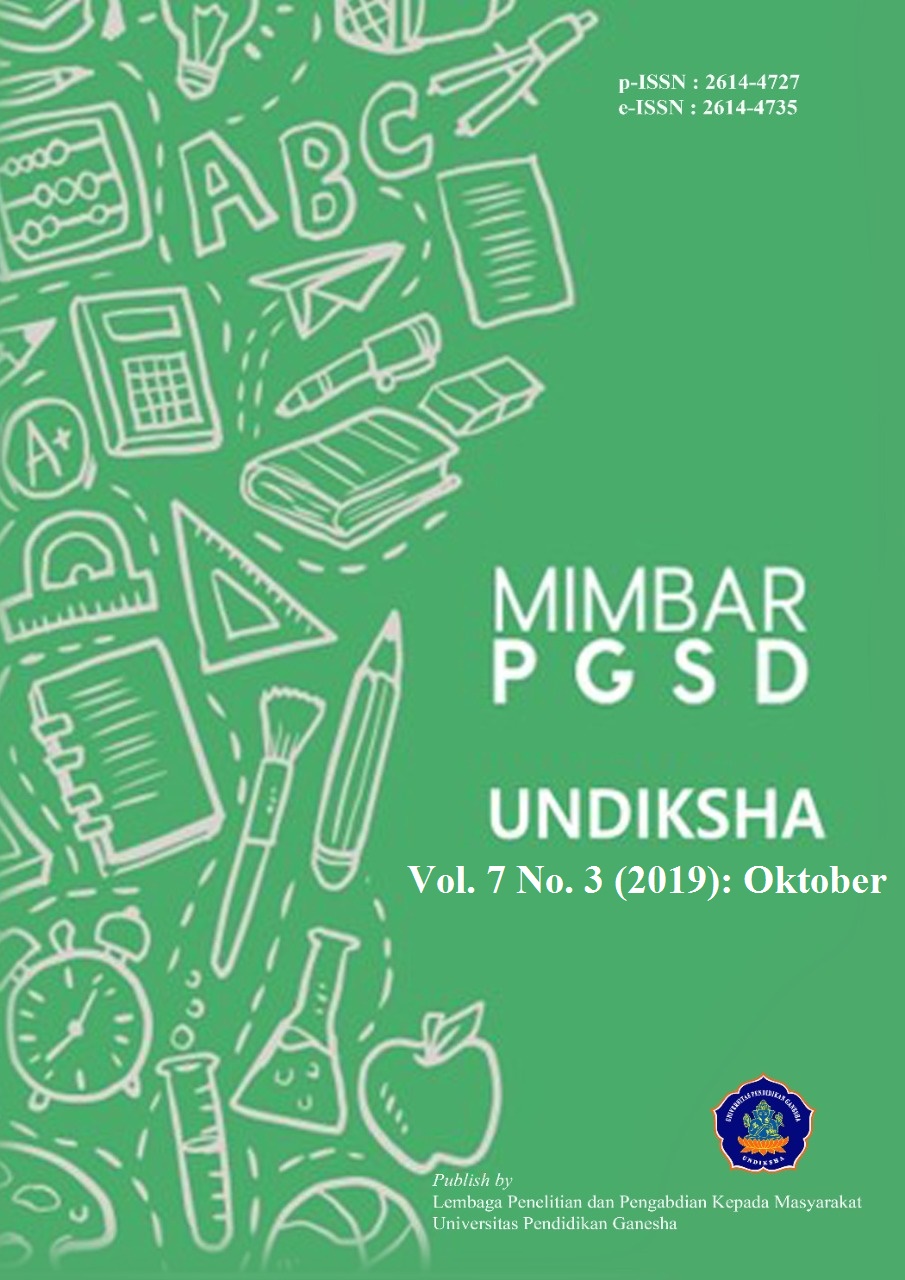Pengaruh Model Pembelajaran Terpadu Tipe Connected Berbantu Media Video Animasi
DOI:
https://doi.org/10.23887/jjpgsd.v7i3.19492Abstract
Latar belakang penelitian ini adalah rendahnya hasil belajar kognitif IPA siswa, sekitar 52,3% siswa masih memperoleh nilai dibawah Kriteria Ketuntasan Minimum (KKM). Penelitian ini bertujuan untuk mengetahui pengaruh model pembelajaran terpadu tipe connected berbantu media video animasi terhadap hasil belajar kognitif IPA siswa kelas V Sekolah Dasar dilihat pada ketuntasan dan peningkatan hasil belajar. Jenis penelitian ini adalah penelitian kuantitatif dalam bentuk desain Quasi Experimental Design yang digunakan adalah bentuk Nonequivalent Control Group Design. Sampel yang diambil adalah 20 siswa kelas VA dan 20 siswa kelas VB dengan menggunakan teknik Sampling Jenuh. Data dalam penelitian ini diperoleh melalui tes (pretestposttest), observasi dan dokumentasi. Hasil analisis data diperoleh nilai rata-rata pretest kelas eksperimen sebesar 62. Setelah diberi perlakuan, nilai rata-rata posttest mengalami peningkatan menjadi 80. Data tersebut didukung oleh analisis menggunakan analisis regresi linier sederhana, variabel x (model connected) mempengaruhi variabel y (hasil belajar IPA siswa) sebesar 57,1%. Maka dapat disimpulkan bahwa ada pengaruh model pembelajaran terpadu tipe connected berbantu media video animasi terhadap hasil belajar kognitif IPA siswa kelas V Sekolah Dasar.
Kata kunci: Model Connected, Video, Hasil Belajar
Downloads
Published
How to Cite
Issue
Section
License
Authors who publish with the Mimbar PGSD Undiksha agree to the following terms:
- Authors retain copyright and grant the journal the right of first publication with the work simultaneously licensed under a Creative Commons Attribution License (CC BY-SA 4.0) that allows others to share the work with an acknowledgment of the work's authorship and initial publication in this journal.
- Authors are able to enter into separate, additional contractual arrangements for the non-exclusive distribution of the journal's published version of the work (e.g., post it to an institutional repository or publish it in a book), with an acknowledgment of its initial publication in this journal.
- Authors are permitted and encouraged to post their work online (e.g., in institutional repositories or on their website) prior to and during the submission process, as it can lead to productive exchanges, as well as earlier and greater citation of published work. (See The Effect of Open Access)













